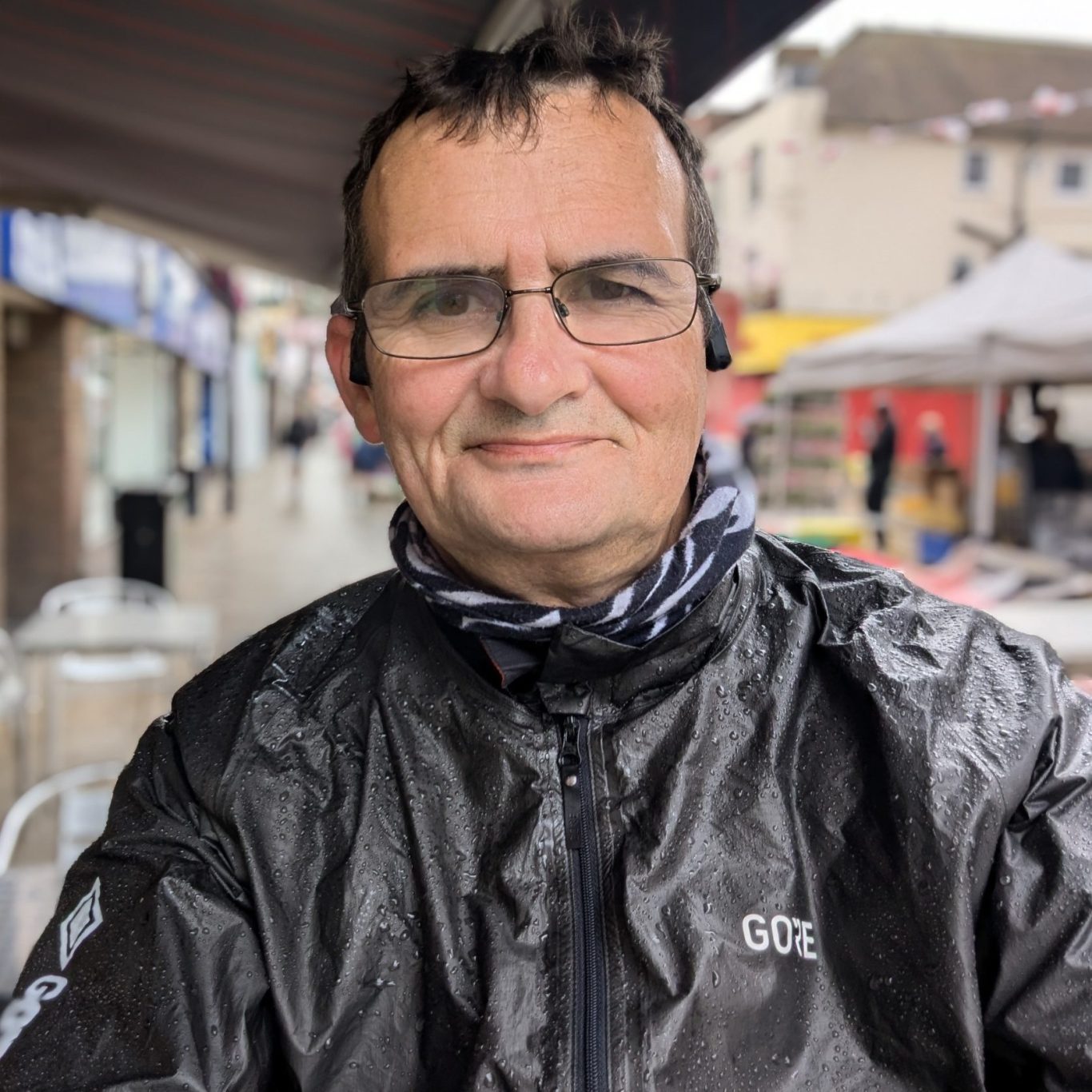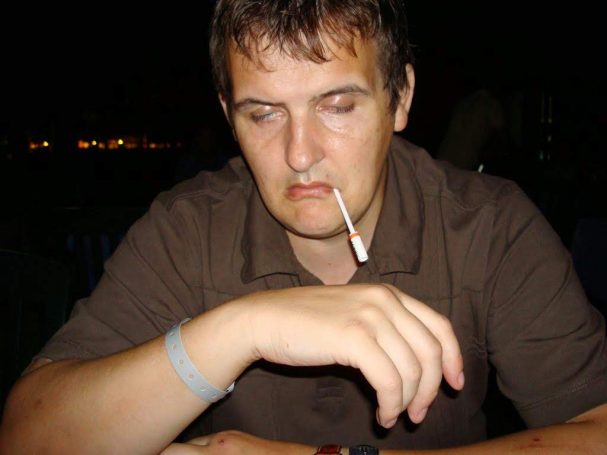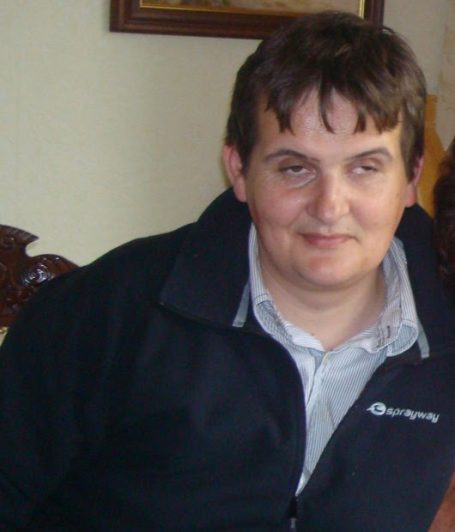About Me
I started cycling as a way to say thank you to my pain management team. They helped me so much, and I wanted to show them that their support and the pain management skills they taught me were making a real difference. Plus, the ongoing medical battles I face are tough. Pushing myself hard with cycling helps me prepare for those challenges, both physically and mentally. It's a way to train my mind and body to overcome anything that comes my way.
2.92 Million
Subluxations
Knees, Shoulders, Hips, Toes, Fingers, Ribs, Jaw
343,000
Dislocations
My Life with 'Ehlers Danlos Syndrome'

Embracing the New Normal: My Journey to Empowerment
I've lived with the symptoms of Ehlers-Danlos Syndrome (EDS) since the day I was born. EDS affects every aspect of my life, and I was diagnosed at the age of 40. In 2005, a severe knee dislocation led to the discovery of trochlear dysplasia, and it was then that my life took a difficult turn.
My mobility deteriorated rapidly, and I was left in excruciating pain with minimal relief. I spent my days confined to my bed or the couch, only moving when absolutely necessary or for medical appointments. My wife bore the burden of supporting me without any help from family, friends, or medical professionals. I was in a very dark place, begging her to help me end my suffering.
Throughout my journey, I've faced disbelief, accusations of laziness, and even doctors denying the existence of EDS. With no help or support, I've had to navigate and self-manage my complex symptoms. I've tried various psychological therapies and seen hundreds of medical professionals, only to be told my pain was "all in my head."
My journey has been anything but straightforward, as I've faced a wide range of physical and mental obstacles, from gastrointestinal and cardiovascular to chronic pain and fatigue.
In 2012 after 42 long years of unexplained widespread constant severe pain, I finally received a diagnosis: Ehlers-Danlos Syndrome (EDS). This diagnosis empowered me, providing the knowledge and answers I needed to build a new normal for myself.
My mobility deteriorated rapidly, and I was left in excruciating pain with minimal relief. I spent my days confined to my bed or the couch, only moving when absolutely necessary or for medical appointments. My wife bore the burden of supporting me without any help from family, friends, or medical professionals. I was in a very dark place, and begged my wife to help me end my suffering.
Additionally, I live with Complex Regional Pain Syndrome (CRPS), a condition ranked by medical professionals as the most painful condition known to doctors. My CRPS developed after two severe leg infections, but I've managed to cope with the nerve pain because I was already accustomed to constant severe pain from bone and soft tissue issues.
Living with such intense pain has made me remarkably resilient; I didn't even realise I had broken my shoulder in 2018 for six weeks, as the pain was no worse than usual. I also deal with recurrent rotator cuff injuries, a testament to my body's remarkable ability to adapt to adversity.
I'm a living, breathing testament to resilience and tenacity, whilst navigating life with a unique set of medical complexities.
My life on Pain Medication
From a young age, I relied on pain medication to manage my pain. I have tried almost every painkiller available, from common over-the-counter options like paracetamol and codeine, to powerful opioids like methadone and fentanyl. Despite taking a cocktail of strong opiates at times, I only ever achieved partial relief from my pain.
By 2007, I had exhausted all treatment options and had to accept that there was nothing more that could be done. My body had developed a dangerous tolerance to some medications, and the risk of sudden death became very real. As a result, I had to switch to a lower dosage of slow-release morphine to manage my pain.
As I continued to struggle with chronic pain, I also developed severe central sleep apnea, which led to anxiety and a fear of dying in my sleep. My health challenges seemed insurmountable.
As a long-term pain sufferer, I have faced countless challenges and tried various treatments with little help from doctors. My wife and I have navigated this difficult path mostly on our own, without the support of friends, family, or the medical community.
Embracing Life with Chronic Pain
For decades, I have experienced severe pain every single day, to the point where I can't remember what it feels like to be pain-free. Over time, I've learned to adapt and accept the things I cannot change. I've adjusted my daily routine to help manage my fatigue and sleep issues, and I've also come to terms with the reality of my pain. For most of my life, my pain was invisible, and I hid it from others by pretending to be fine. But I've realised that it's exhausting to maintain that facade.
Conquering My Fears: Overcoming Opiate Dependency and Pain Medication Withdrawal
In November 2019, I faced a terrifying choice: stop taking high-dosage slow-release morphine and all my pain meds, or face the reality that I might not live another year. At the same time, I was dealing with a severe leg infection related to Ehlers-Danlos Syndrome (EDS) and Chronic Venous Insufficiency (CVI) that wasn't responding to antibiotics, as well as adhering to an 800-calorie-per-day medically supervised diet.
I had experienced opiate withdrawal before, but detoxing from 1200mg of slow-release morphine and 2800mg of gabapentin was the toughest battle I had ever faced. But as it turns out it was just the support act!
When I asked my pain management team if they knew of anyone who had successfully detoxed from high-dosage morphine, they didn't. However, they granted me the autonomy to choose my own path and warned me about the potential impact on my mental health. I promised to reduce my medication intake by no more than 10% every 14 days.
Overcoming an intense withdrawal from pain medication, a gruelling, brutal experience that spanned over 8 months and 2 weeks. Reducing my dosage by 10% at a time, I endured continuous withdrawal symptoms that were comparable to going cold turkey with heroin for 256 days.
The first 1100mg reduction was brutal, pushing my mental health to its limits, causing pain flare-ups, and leaving me without relief. There were days when getting out of bed was impossible, and the temptation to take another pill was overwhelming.
My mental health reached a breaking point within the first 4 weeks, forcing me to prioritise my resilience and well-being. I mistakenly thought that once I reached 100mg per day, the hard part was over. However, the last 100mg proved to be even more challenging.
Staying positive in such trying times wasn't easy, but I forced myself to keep going. I never want to relive this experience, but I learned invaluable lessons along the way. Today, I still experience constant severe pain, but without the side effects of strong pain meds. My journey has taught me the importance of tenacity and the power of resilience in the face of adversity.
Interview in November 2022 for NHS on Opiates and Pain for West Suffolk Hospital, Pain Clinic
Navigating the Uncharted Territory of Ehlers Danlos Syndrome and Gastrointestinal Issues
The Challenge of Gastrointestinal Complications
My journey with Ehlers Danlos Syndrome has been a constant uphill battle, particularly in managing the myriad of gastrointestinal (GI) issues that have severely impacted my life. As there are no well-validated national or international guidelines for managing EDS-related GI symptoms.
My journey has been fraught with challenges, particularly in managing the severe gastrointestinal (GI) issues that include dysmotility, dysphagia, dysfunction, GERD, gastroparesis, chronic intestinal pseudo-obstruction (CIPO), SIBO, intestinal permeability, malabsorption, malnutrition and a host of food intolerances.
Since August 2020, I've been on a medical liquid-only diet due to my severe gastrointestinal issues. My gut has come to a complete halt, and I'm fighting to get things moving again.
Despite the challenges this brings, I am determined to find my own path without succumbing to tube feeding or other invasive procedures.

Defying the Odds: My Battle Against a Dire Prognosis
My gastroenterologist has warned me of a poor prognosis, which includes tube feeding, Total Parenteral Nutrition (TPN), ileostomy, bowel resection and complications like sepsis, and recurrent infections.
Despite these grim prospects, I'm determined to forge my own path and avoid these invasive interventions.
I must also cope with the daily challenges of constant severe pain, dislocations, subluxations, chronic fatigue, brain fog, Mast Cell Activation Syndrome (MCAS), Postural Orthostatic Tachycardia Syndrome (POTS), dysautonomia, Complex Regional Pain Syndrome (CRPS), Chronic Venous Insufficiency (CVI), early-onset osteoarthritis, central sleep apnea, and narcolepsy.
My Fight Isn't Over – It's Transformed
I won't pretend I'm magically cured. It was a tough road, and it still is. My journey has been full of highs and lows, disappointments, and breakthroughs. The biggest difference? Now, I carry the pain, not the other way around.
Before, pain was me. It controlled every decision, every thought. Now it's a challenge to overcome, not my entire existence. Something as simple as sailing (which before would've been unthinkable), allows a few blessed hours where the pain just vanishes. That's the true miracle.
Chronic pain has been a dark, relentless companion. But the fight changed me. It made me realise pain doesn't get to define who I am.
The Raw Truth:
Finding Strength Beyond Positivity
My journey has been one of overcoming adversity without relying solely on the concept of positivity. I believe that there's more to resilience than just "staying positive," and I want to explore alternative ways of finding strength in our darkest moments.
My experiences, including detoxification and coping with severe pain and withdrawal symptoms, taught me that "hope" isn't always enough. Sometimes, we need to dig deep and find the grit and determination to push through. I learned to tell myself that failure wasn't an option and that I needed to "suck it up" and be tenacious.
©Copyright thetenaciouscyclist.co.uk. All rights reserved.
We need your consent to load the translations
We use a third-party service to translate the website content that may collect data about your activity. Please review the details in the privacy policy and accept the service to view the translations.


